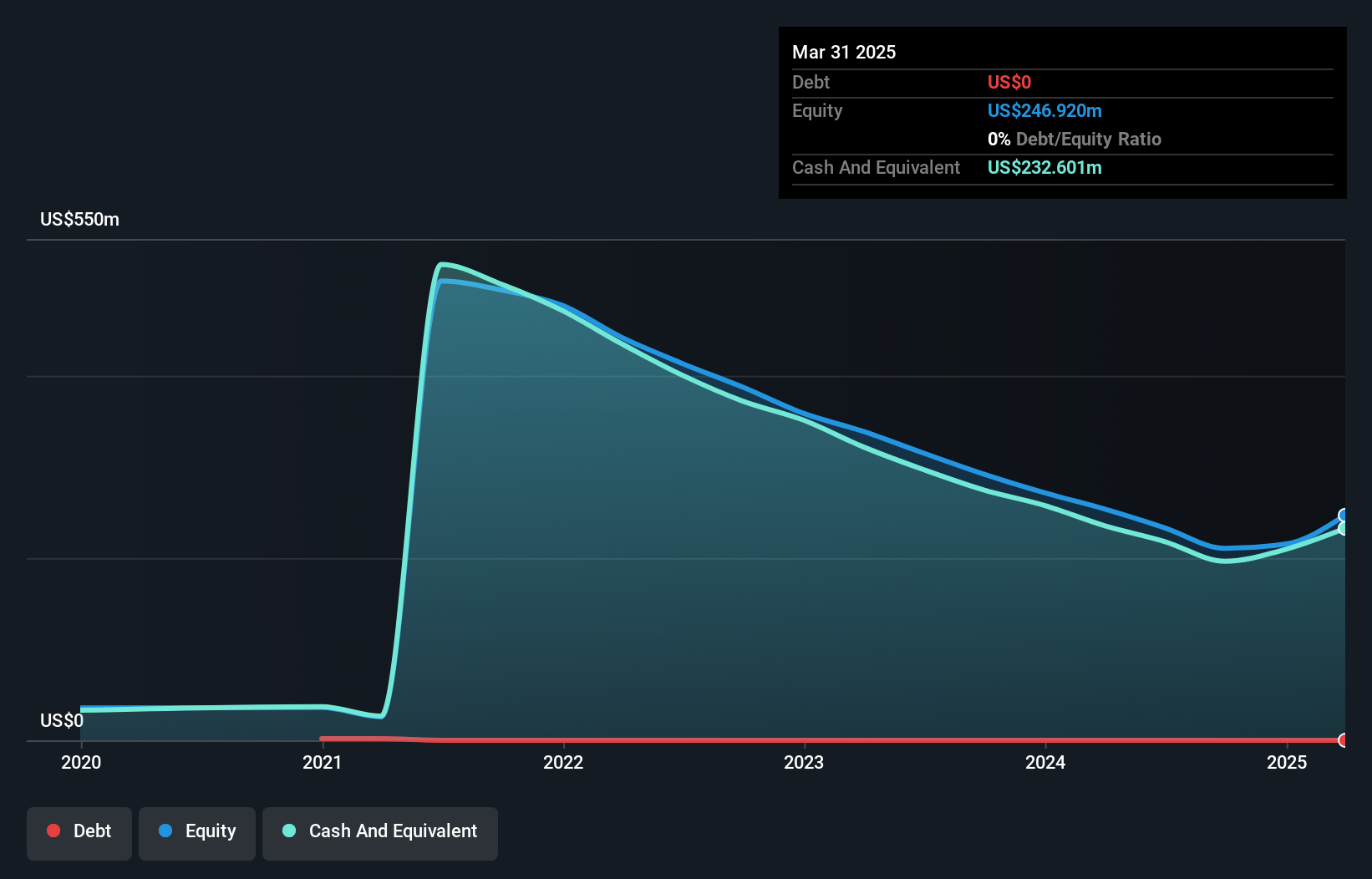- United States
- /
- Life Sciences
- /
- NasdaqGM:QSI
We're Hopeful That Quantum-Si (NASDAQ:QSI) Will Use Its Cash Wisely

We can readily understand why investors are attracted to unprofitable companies. By way of example, Quantum-Si (NASDAQ:QSI) has seen its share price rise 141% over the last year, delighting many shareholders. But while the successes are well known, investors should not ignore the very many unprofitable companies that simply burn through all their cash and collapse.
So notwithstanding the buoyant share price, we think it's well worth asking whether Quantum-Si's cash burn is too risky. For the purpose of this article, we'll define cash burn as the amount of cash the company is spending each year to fund its growth (also called its negative free cash flow). First, we'll determine its cash runway by comparing its cash burn with its cash reserves.
Does Quantum-Si Have A Long Cash Runway?
A cash runway is defined as the length of time it would take a company to run out of money if it kept spending at its current rate of cash burn. In March 2025, Quantum-Si had US$233m in cash, and was debt-free. Importantly, its cash burn was US$96m over the trailing twelve months. Therefore, from March 2025 it had 2.4 years of cash runway. That's decent, giving the company a couple years to develop its business. Depicted below, you can see how its cash holdings have changed over time.

See our latest analysis for Quantum-Si
How Well Is Quantum-Si Growing?
Some investors might find it troubling that Quantum-Si is actually increasing its cash burn, which is up 4.5% in the last year. On a more positive note, the operating revenue improved by 168% over the period, offering an indication that the expenditure may well be worthwhile. If that revenue does keep flowing reliably, then the company could see a strong improvement in free cash flow simply by reducing growth expenditure. We think it is growing rather well, upon reflection. Clearly, however, the crucial factor is whether the company will grow its business going forward. So you might want to take a peek at how much the company is expected to grow in the next few years.
Can Quantum-Si Raise More Cash Easily?
We are certainly impressed with the progress Quantum-Si has made over the last year, but it is also worth considering how costly it would be if it wanted to raise more cash to fund faster growth. Issuing new shares, or taking on debt, are the most common ways for a listed company to raise more money for its business. One of the main advantages held by publicly listed companies is that they can sell shares to investors to raise cash and fund growth. By comparing a company's annual cash burn to its total market capitalisation, we can estimate roughly how many shares it would have to issue in order to run the company for another year (at the same burn rate).
Quantum-Si has a market capitalisation of US$345m and burnt through US$96m last year, which is 28% of the company's market value. That's fairly notable cash burn, so if the company had to sell shares to cover the cost of another year's operations, shareholders would suffer some costly dilution.
Is Quantum-Si's Cash Burn A Worry?
On this analysis of Quantum-Si's cash burn, we think its revenue growth was reassuring, while its cash burn relative to its market cap has us a bit worried. Cash burning companies are always on the riskier side of things, but after considering all of the factors discussed in this short piece, we're not too worried about its rate of cash burn. An in-depth examination of risks revealed 4 warning signs for Quantum-Si that readers should think about before committing capital to this stock.
If you would prefer to check out another company with better fundamentals, then do not miss this free list of interesting companies, that have HIGH return on equity and low debt or this list of stocks which are all forecast to grow.
Valuation is complex, but we're here to simplify it.
Discover if Quantum-Si might be undervalued or overvalued with our detailed analysis, featuring fair value estimates, potential risks, dividends, insider trades, and its financial condition.
Access Free AnalysisHave feedback on this article? Concerned about the content? Get in touch with us directly. Alternatively, email editorial-team (at) simplywallst.com.
This article by Simply Wall St is general in nature. We provide commentary based on historical data and analyst forecasts only using an unbiased methodology and our articles are not intended to be financial advice. It does not constitute a recommendation to buy or sell any stock, and does not take account of your objectives, or your financial situation. We aim to bring you long-term focused analysis driven by fundamental data. Note that our analysis may not factor in the latest price-sensitive company announcements or qualitative material. Simply Wall St has no position in any stocks mentioned.
About NasdaqGM:QSI
Quantum-Si
A life sciences company, engages in the development of single-molecule detection platform to enable Next Generation Protein Sequencing (NGPS).
Flawless balance sheet slight.
Similar Companies
Market Insights
Community Narratives


